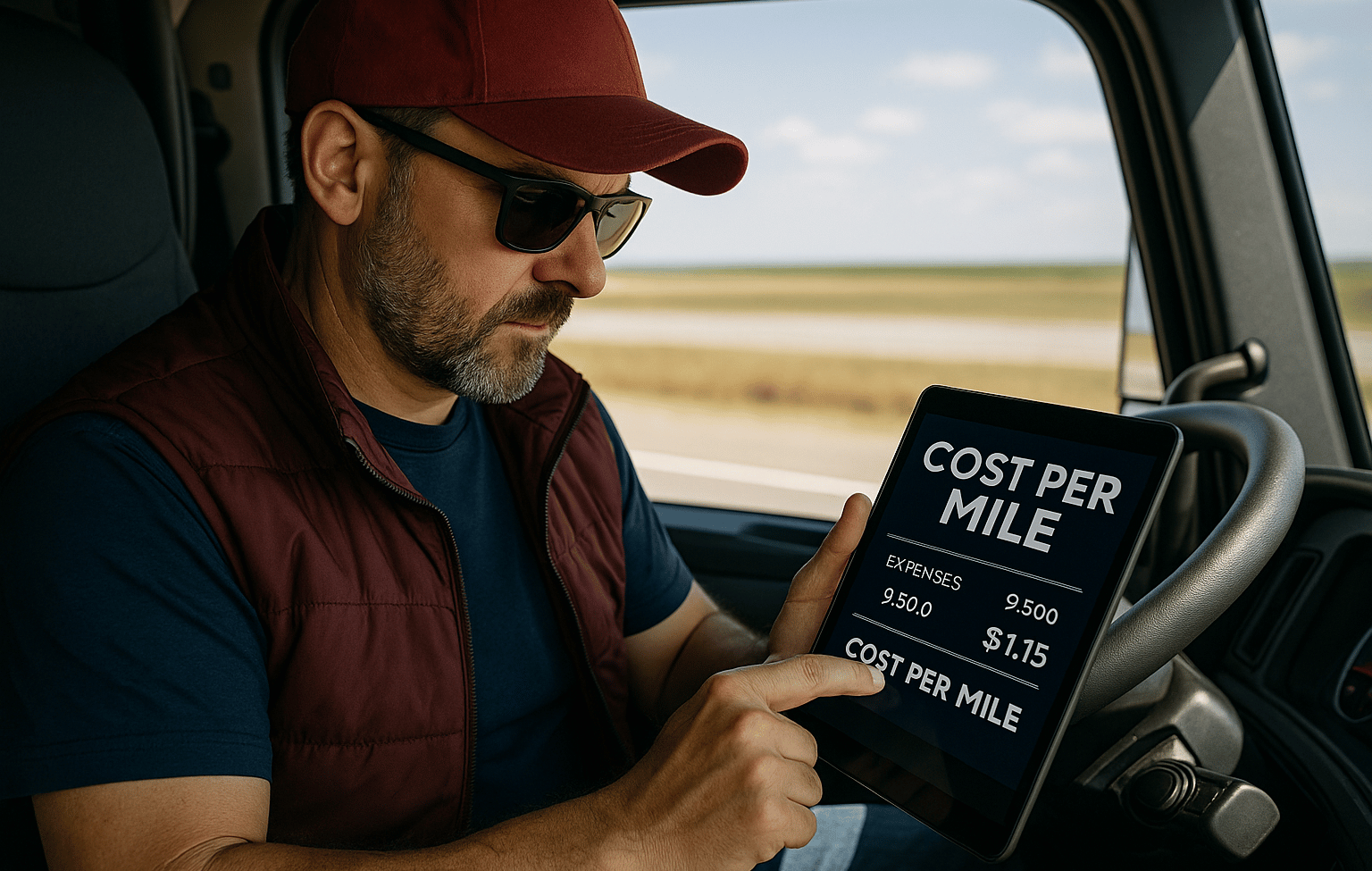Why Not Knowing Your Cost Per Mile Is Costing You Thousands

If you’re running loads without knowing your real cost per mile, you’re not running a business—you’re rolling dice with your livelihood. A lot of drivers think, “As long as the load pays decent, I’m good.” But let me show you why that mindset is bleeding your wallet dry.
1. Think About It Like This: Gross Doesn’t Mean Gain
That $3,000 load sounds good until you factor in fuel, tolls, maintenance, insurance, and deadhead miles. If it costs you $2,700 to deliver it, you didn’t make $3,000. You made $300. Maybe.
You can’t manage what you don’t measure. And if you can’t quote your cost per mile with confidence, you’re just guessing.
👉 Read our full breakdown on calculating cost per mile
2. Why Most Owner-Operators Don’t Track It
Let’s keep it real: Tracking cost per mile sounds like extra work. You’re already juggling dispatch, breakdowns, invoices, DOT, and finding parking. But think about this: Would you run a gas station without knowing the price of fuel?
Not knowing your numbers is like handing someone your wallet and hoping they don’t take too much.
3. Fuel Costs Can Wipe Out Your Week
You might think you’re winning with a high-paying load until you fill up twice and drop $1,200 in fuel. If you don’t know what that load is truly netting you per mile, you might be running for pennies and not even know it.
Smart drivers track their fuel per mile—and use that number to negotiate better or reject junk freight.
4. The Hidden Killer: Idle Time and Deadhead Miles
Deadhead miles don’t pay. Neither does sitting in traffic. But they still cost you.
If your load pays $2.00 per mile loaded, but you drive 100 unpaid miles to get it, your real rate drops fast. When you track your cost per all miles driven, you start making smarter decisions and stop chasing volume over value.
👉 Want to reduce risk on the road? Protect your truck and business with the right commercial insurance
5. Without Knowing Your Cost, You Can’t Scale
Want to hire a second driver? Add a truck? Go from leased-on to running under your own authority?
You can’t scale what you can’t measure. You need to know your cost per mile before you take that next step. Otherwise, you’re guessing your way into a bigger mess.
6. How to Figure It Out (Even If You’re Not a Numbers Guy)
Start simple:
- Add up all expenses for the month: fuel, insurance, truck payment, repairs, ELD, meals, etc.
- Track every mile driven—loaded and empty.
- Divide expenses by total miles = Your cost per mile.
Let’s say your expenses are $11,000 and you drove 9,500 miles: Your cost per mile is $1.15. If you’re running loads at $1.50, you’re making $0.35 profit per mile. But if you’re running $1.20 freight, you’re barely surviving.
👉 The FMCSA has great guidance on operational budgeting
Final Word: What You Don’t Know Is Hurting You
Not knowing your cost per mile is the fastest way to run yourself out of business. But once you learn it? You gain control. You make better decisions. You reject the trash freight and start playing the game to win.
👉 Explore life insurance options to protect your income
📰 Sign up for the upcoming Blast Crew Newsletter to get more weekly tips that actually move the needle—real strategies to help you profit, protect, and perform.


